Is it possible to block current flow in one direction like a simple diode using FET transistors to avoid the voltage drop?

simulate this circuit – Schematic created using CircuitLab
I am not talking about reverse polarity protection. With VS>0 and Vbat>0 if Vbat>VS the current flow from battery to power supply. I want that the current only can flow from power supply to battery, so always Ich > 0.
I am reading this document from Texas Instruments: http://www.ti.com/lit/an/slva730/slva730.pdf
But I don't understand how figure 4 works. How the gates of P-channel MOSFET are driven? The FET configuration is symmetrical, how is it possible to block only the current in one direction?
